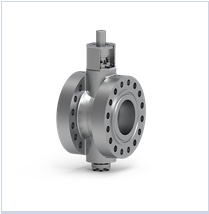Question
-
What’s the range of drop-in fuels we could potentially produce from biofeedstocks (lipids) with an appropriate process line-up?
Nov-2021
Answers
-
Ignacio Fabian Costa, Haldor Topsoe, ifco@topsoe.com
A wide range of drop-in fuels can be produced from biofeedstocks, ranging from renewable LPG, naphtha, jet fuel, and diesel.
The typical main fatty acids present in renewable feedstocks boil in the range of conventional diesel and kerosene. As a result, a simple process line-up can provide high-quality production of renewable kerosene and diesel.
More advanced process layouts can provide full flexibility to transform almost any renewable feedstocks into high-value renewable diesel, jet fuel, and naphtha.
Nov-2021
-
Larissa Perotta, Axens, Larissa.Perotta@Axens.com
Lipids are biofeedstocks that, after hydrotreatment, will generate 100% linear paraffin streams in the typical range of C14-C20, free of sulphur and nitrogen.
These paraffins are suitable for various applications, depending on the downstream processing applied:
- With no further conversion, it is possible to incorporate them directly into the diesel pool as cetane enhancers. The limit of incorporation will be dictated by the pool’s cold flow specifications, as this stream presents a cloud point typically around 15-30°C.
- With no further conversion, it can also be used in the petrochemical industry as feed for steam crackers.
- When further converted through isomerisation/hydrocracking, this stream can, depending on the severity of the conversion, feed the diesel pool as HVO (with tailored cold flow properties and no limit of incorporation), the jet pool as SAF (up to 50% in the jet pool as per ASTM D7566) or the naphtha pool (mostly for the petrochemical industry due to the paraffinic nature of this product and its low octane number). If desired, naphtha can be further upgraded to reach the gasoline pool as renewable gasoline.Propane is also one of the products of lipid hydrotreatment and may be collected to feed the LPG pool as renewable LPG.
Nov-2021

















